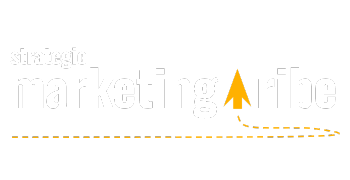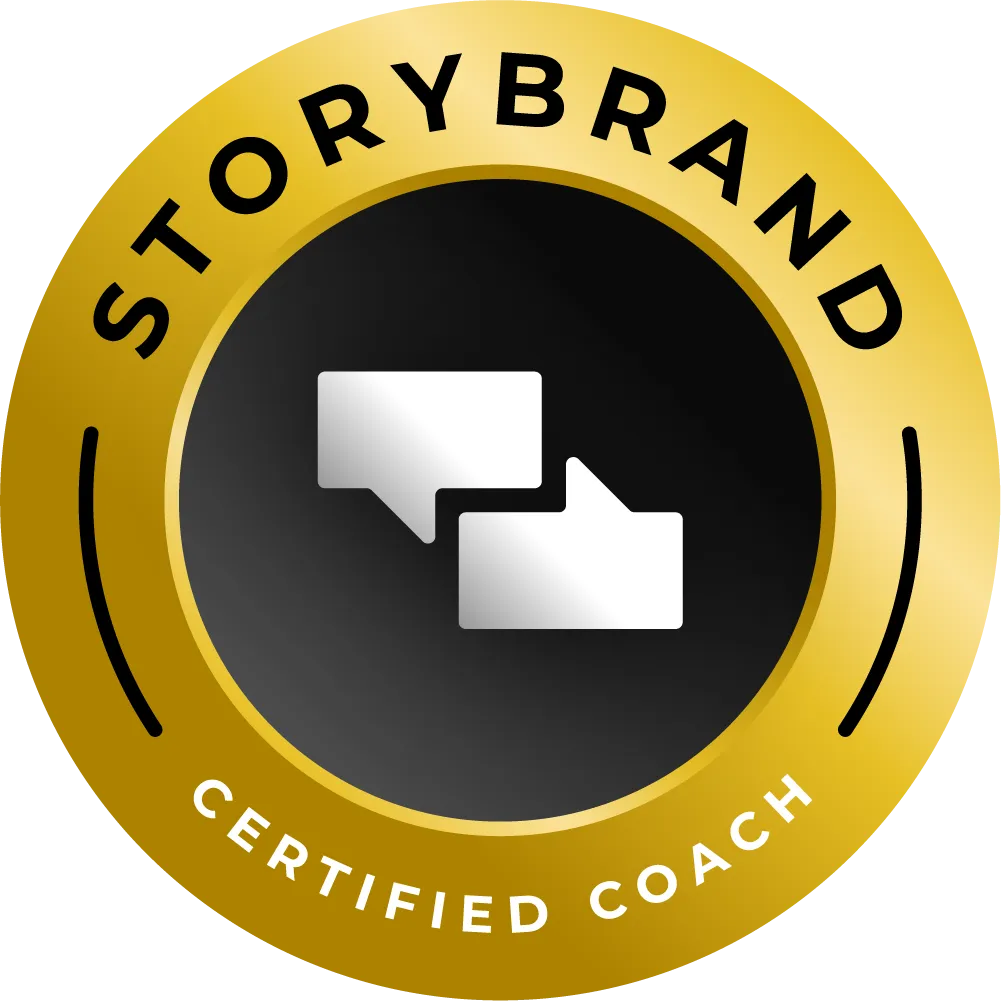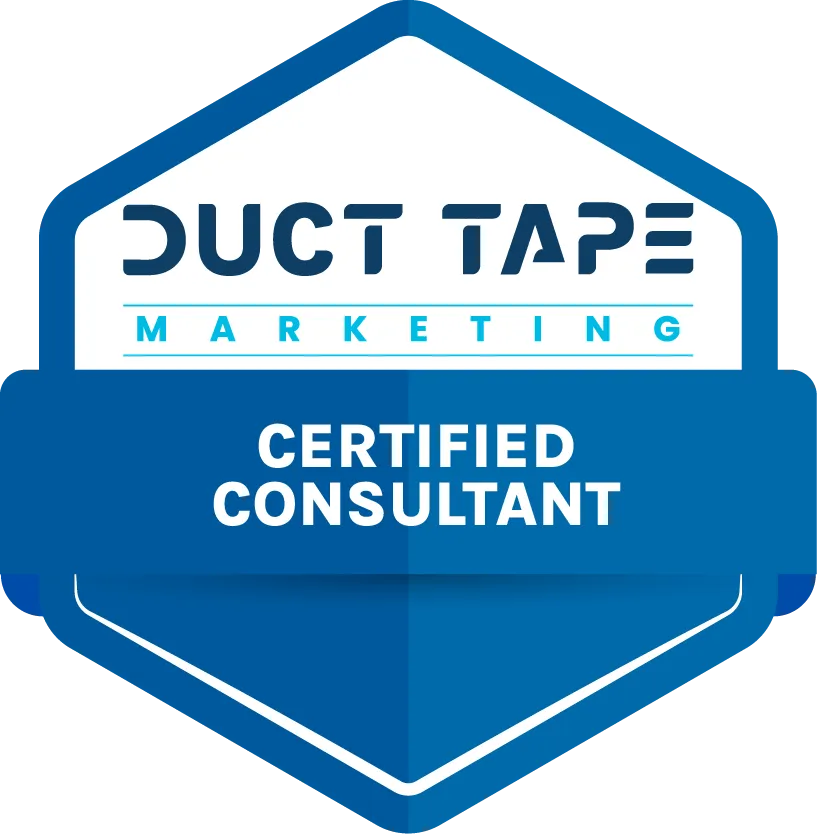STORY, MEET STRATEGY
Let’s make marketing feel less robotic and more real.
Find resources that bring your message—and your business—to life.
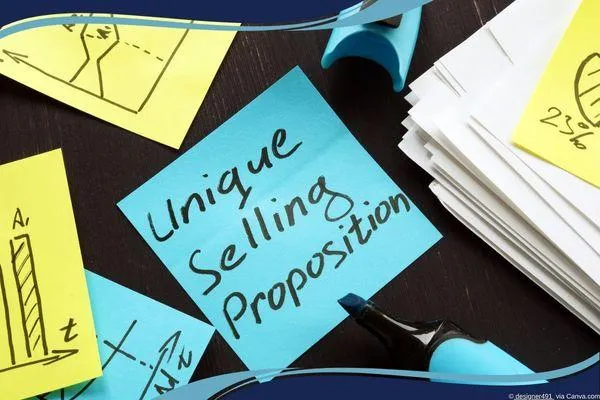
How to Find Your Unique Selling Proposition Fast
By Vicky Sidler | Published 28 October 2025 at 12:00 GMT+2
If you’ve ever spent weeks trying to “find your unique selling proposition,” only to end up with a sentence that sounds like everyone else’s, you’re not alone. The good news is you don’t need consultants, surveys, or a whiteboard covered in Post-it notes. You just need structure, curiosity, and a few honest conversations with your customers.
I’m Vicky Sidler, a StoryBrand Certified Guide and Duct Tape Marketing strategist who believes the simplest way to uncover your USP combines three things: a short self-audit, a bit of competitor research, and customer feedback that cuts through the BS.
If that sounds intimidating, don’t worry. I’m going to show you how to make the whole process super easy. And you’ll be able to tick something pretty important off your to-do list this week.
TL;DR:
Start with three questions: What problem do you solve? Who feels it most? How do you solve it differently?
Use this USP worksheet to map what makes you stand out
Talk to customers—what they say is often more accurate than what you think
Test your USP with real people before changing your website
👉 Need help getting your message right? Download the 5-Minute Marketing Fix.
Table of Contents:
How to Find Your Unique Selling Proposition Fast
Step 1. Ask the Right Three Questions:
Step 2. Use Free Tools That Do the Thinking For You:
Step 3. Talk to Real Customers:
Step 4. Test Before You Announce:
Step 5. Make It StoryBrand Simple:
1. StoryBrand South Africa: A Guide That Actually Works
2. Analog Intelligence vs AI Overload: How to Think Again
3. Unleash Your Brand: Harness the Power of StoryBrand
4. South Africa's Small Business Boom: R500m in Growth
5. New Marketing Book By Sara Nay Helps Small Businesses Escape Broken Models
6. The Complete Guide to Strategic Marketing
FAQs on Finding Your Unique Selling Proposition
1. What is a Unique Selling Proposition (USP)?
2. Why do small businesses need a USP?
3. How can I find my USP if I’m just starting out?
4. What if I have more than one customer type?
5. How do I know if my USP is strong enough?
6. What are the biggest mistakes businesses make with USPs?
7. How do customer conversations help me find my USP?
8. How does StoryBrand help with my USP?
Step 1. Ask the Right Three Questions:
Forget complicated branding exercises. Start with these:
What specific problem do you solve?
Who feels that problem most?
How do you solve it differently from anyone else?
Most businesses trip up on that last one. Your difference isn’t your logo, your experience, or your “commitment to excellence.” It’s the thing competitors either can’t or won’t offer.
A small bakery, for instance, might not just “sell bread.” It solves the problem of finding fresh, healthy baked goods for families with allergies. That’s a problem people are actively searching to solve—and they’ll pay extra for it.
Step 2. Use Free Tools That Do the Thinking For You:
GoDaddy’s free USP worksheet is surprisingly good. It walks you through your audience’s pain points, your competitors’ weaknesses, and the emotional outcomes your customers want.
It also asks blunt questions like “What frustrates customers about others in your market?” These help you see your business the way your customers do—which is rarely how you describe it on your homepage.
If you prefer something more visual, try the Value Proposition Canvas from Digital Leadership. It maps customer frustrations (pains) against your solutions (pain relievers). The overlap between what customers care about and what only you can fix? That’s your USP.
Step 3. Talk to Real Customers:
Nothing sharpens your message faster than five simple questions:
Why did you choose us?
What challenge do we help you solve?
What nearly stopped you from working with us?
What do you tell friends about us?
What result have you valued most?
These conversations will reveal your real value—often in your customers’ own words. One client once told me, “You made marketing finally make sense.” That sentence became the basis of an entire campaign.
Step 4. Test Before You Announce:
Once you have a draft USP, put it through what I call the Three Tests:
The Elevator Test – Can you say it clearly in 30 seconds?
The Competitor Test – Could anyone else claim this?
The Reaction Test – Do customers light up when they hear it?
If you pass all three, try posting two short social media messages—one with your USP, one without—and see which one performs better. The numbers never lie. (Actually, that’s not true. The numbers can often mean all sorts of things. But this is still a helpful exercise.) Maybe put 50 bucks behind it in a small ad campaign to get faster results if your organic socials are a bit quiet.
Step 5. Make It StoryBrand Simple:
If you follow the StoryBrand framework, your USP becomes part of a story where:
The customer is the hero.
The problem is clearly defined.
You’re the guide with the plan.
The success outcome is easy to picture.
A strong USP isn’t about your business. It’s about how your customer’s life changes because of it.
Turn Clarity Into Customers:
The best part? You can build a solid USP this week without spending a cent. Start with GoDaddy’s worksheet, talk to five customers, and test one clear sentence that explains your difference.
Because when your message is clear, your marketing finally works.
And that’s where my 5-Minute Marketing Fix comes in—to help you write your one-liner that connects instantly with customers.
Related Articles:
1. StoryBrand South Africa: A Guide That Actually Works
Once you’ve nailed your USP, this article shows how to turn it into clear StoryBrand messaging that connects instantly with South African audiences. It’s the natural next step from clarity to communication.
2. Analog Intelligence vs AI Overload: How to Think Again
If your USP process reminded you that human insight beats automation, this one reinforces it. Learn why slowing down and thinking deeply often leads to stronger, more authentic marketing.
3. Unleash Your Brand: Harness the Power of StoryBrand
You’ve discovered what makes you unique—now it’s time to express it. This article shows how to weave your USP into customer-focused stories that drive engagement using the 7-part StoryBrand framework.
4. South Africa's Small Business Boom: R500m in Growth
Curious how other entrepreneurs are growing fast? This piece highlights how over 200,000 South African businesses are succeeding through clear messaging and smart digital strategies.
5. New Marketing Book By Sara Nay Helps Small Businesses Escape Broken Models
Ready to take your USP further? This article introduces practical systems and frameworks from Sara Nay’s latest book to help you apply your newfound clarity across your entire marketing strategy.
6. The Complete Guide to Strategic Marketing
Once you’ve identified what makes you unique, this comprehensive guide helps you build a full strategic plan around it. Perfect for small business owners ready to move from “why we’re different” to “how we grow.”
FAQs on Finding Your Unique Selling Proposition
1. What is a Unique Selling Proposition (USP)?
Your USP is the clear statement that explains what makes your business different from others. It defines the specific problem you solve, who you solve it for, and how you solve it better or differently than competitors.
2. Why do small businesses need a USP?
A USP helps you stand out in crowded markets and makes your message clear. Without one, your marketing feels generic and customers won’t remember you.
3. How can I find my USP if I’m just starting out?
Start small. Use free tools like GoDaddy’s USP worksheet, talk to a few potential customers, and pay attention to what they value most about your idea or service. You don’t need data—just honest feedback.
4. What if I have more than one customer type?
You can create multiple USPs for different segments, as long as they all reflect your main differentiator. For example, a café might have one USP for remote workers and another for families, both tied to the same core strengths.
5. How do I know if my USP is strong enough?
Test it. Share it with existing customers and ask if it matches why they chose you. Also try A/B testing it in your marketing materials—if it drives more engagement or sales, you’re on the right track.
6. What are the biggest mistakes businesses make with USPs?
Most USPs focus on features instead of benefits or sound too vague (“quality service,” “trusted experts”). A strong USP should be specific, emotional, and easy to remember.
7. How do customer conversations help me find my USP?
Customers often describe your value in ways you’d never think of. Ask them why they chose you, what problem you solve best, and what they’d tell a friend about your business. Their answers reveal your real differentiator.
8. How does StoryBrand help with my USP?
StoryBrand helps you take your USP and turn it into a clear, customer-focused story. It shifts your messaging from “what we do” to “how we help,” making your difference easy to understand and remember.
9. How often should I revisit my USP?
Review it at least once a year or whenever your market, competition, or customer base changes. As your business evolves, your USP should evolve with it.
10. Where can I get help refining my message?
You can start by using my free tool,the 5-Minute Marketing Fix. It helps you write a one-liner that instantly clarifies your message and builds trust across every marketing channel.
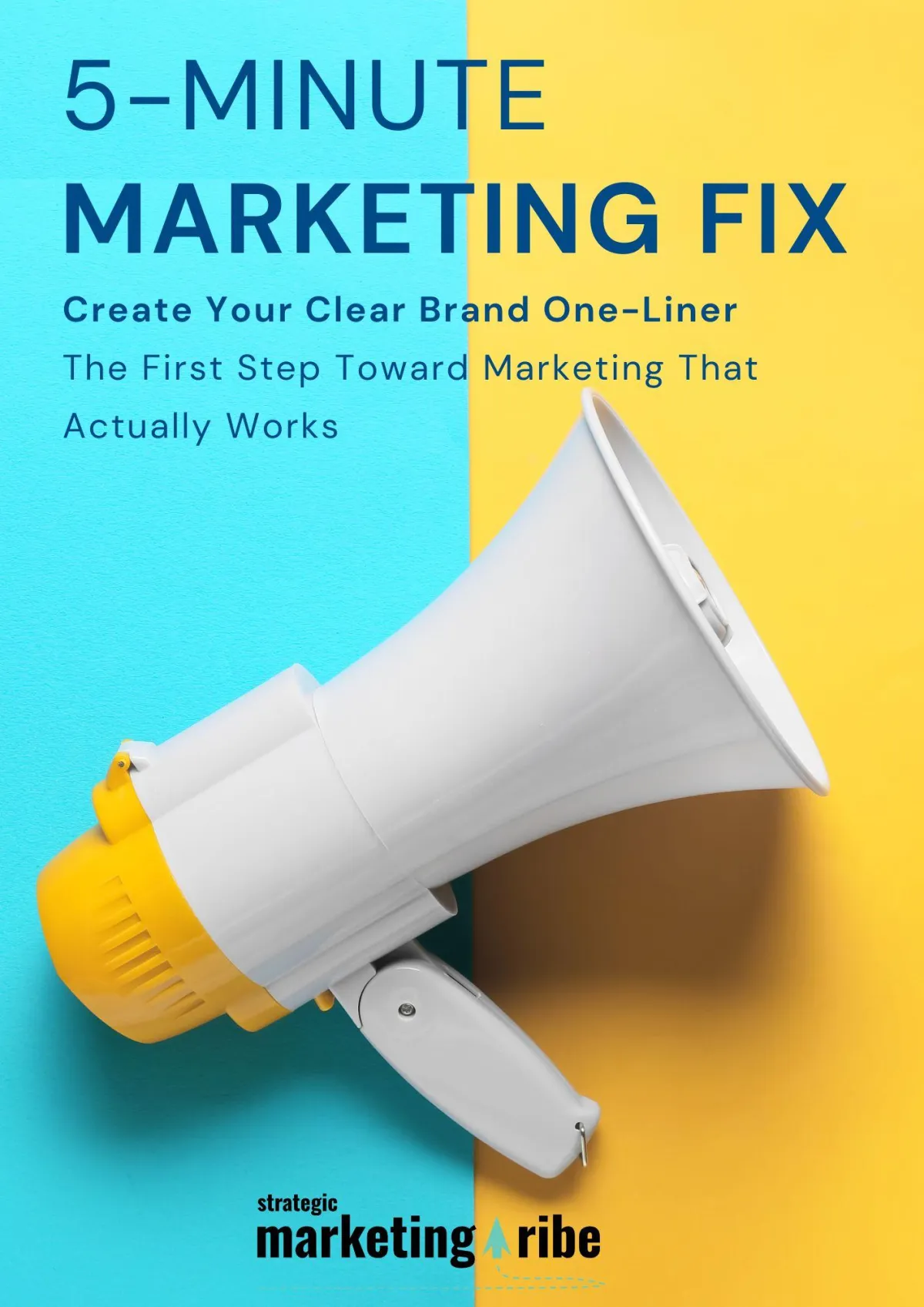
Created with clarity (and coffee)

